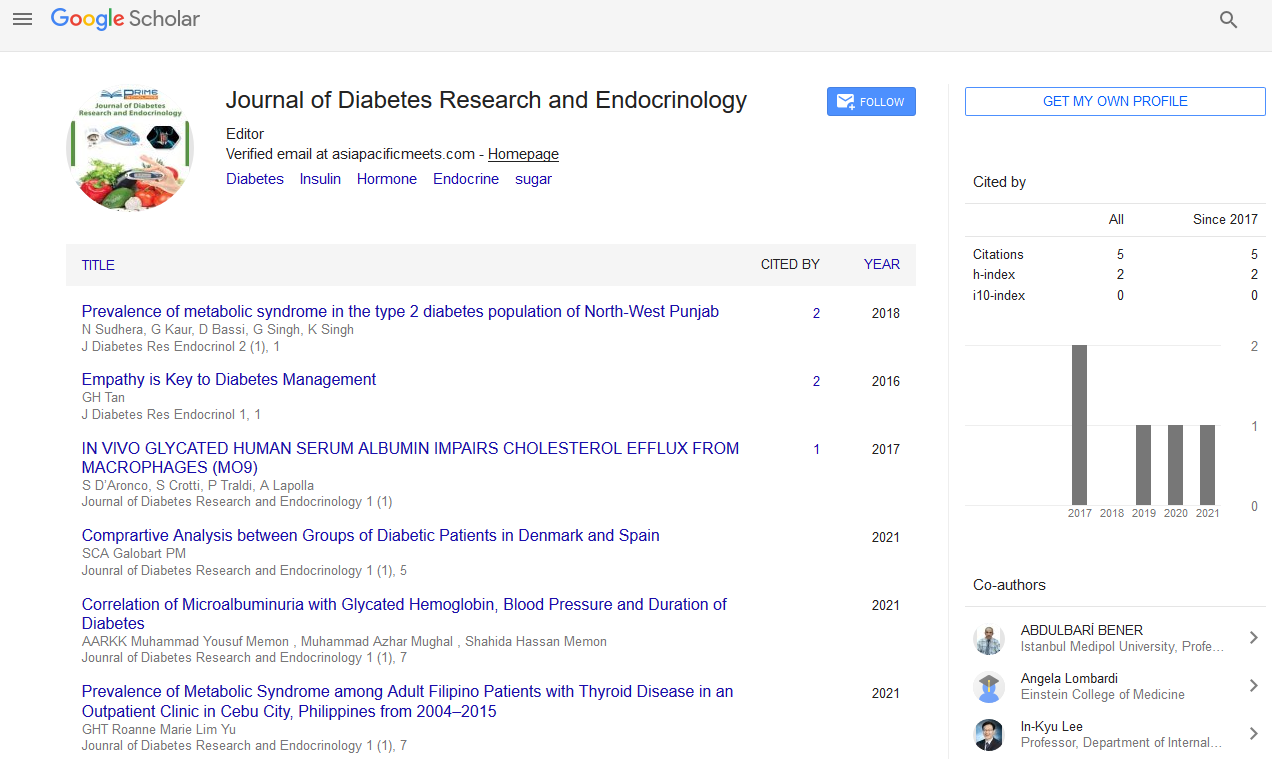Perspective - (2023) Volume 7, Issue 1
Acute Alcohol Ingestion, Chronic Alcohol Abuse, and Liver Disease all Increase the Risk of Alcoholic ketoacidosis
Helmut K Seitz*
Department of Pathology, Zhongnan Hospital of Wuhan University, China
*Correspondence:
Helmut K Seitz,
Department of Pathology, Zhongnan Hospital of Wuhan University,
China,
Email:
Received: 02-Jan-2023, Manuscript No. IPJDRE-23-16123;
Editor assigned: 04-Jan-2023, Pre QC No. IPJDRE-23-16123 (PQ);
Reviewed: 18-Jan-2023, QC No. IPJDRE-23-16123;
Revised: 23-Jan-2023, Manuscript No. IPJDRE-23-16123 (R);
Published:
30-Jan-2023, DOI: 10.36648/ipjdre.7.1.03
Introduction
Ketoacidosis is a metabolic condition characterized by abnormally
high levels of acetone, acetoacetate, and beta-hydroxybutyrate
in the blood and urine. Fatty acids are broken down
into ketone bodies in catabolic states, which can be quickly
used as fuel by individual body cells. The combination of low
insulin and high glucagon levels, or a low insulin/glucagon ratio,
initiates this biochemical cascade. The hormone-sensitive
lipase enzyme that breaks down triglycerides into free fatty
acids and glycerol is activated by low insulin levels, which are
typically the result of absolute or relative hypoglycemia, as
with fasting. Diabetic ketoacidosis (DKA), Alcoholic Ketoacidosis
(AKA), and starvation ketoacidosis are the clinically relevant
ketoacidosis that will be discussed.
Description
If not detected and treated promptly, DKA is a potentially fatal
complication of uncontrolled diabetes mellitus. It usually
happens when there is hyperglycemia and either a relative or
absolute lack of insulin. The lack of insulin causes unopposed
lipolysis and oxidation of free unsaturated fats, bringing about
ketone body creation and ensuing expanded anion hole metabolic
acidosis. Acute alcohol ingestion, chronic alcohol abuse,
and liver disease all increase the risk of alcoholic ketoacidosis.
After the body is starved for a long time and uses fatty acids
instead of glucose as its primary source of energy, ketoacidosis,
also known as “starvation ketoacidosis,” occurs. AKA occurs
in people who abuse alcohol on a regular basis. Patients can
have a well-established history of liquor use and may likewise
introduce following gorges. Both alcohol metabolism and ketogenesis
utilize acetic acid as a substrate. The ratio of insulin
to counter-regulatory hormones determines the conversion to acetyl CoA and subsequent entry into various pathways or cycles,
including the ketogenesis pathway. Glucose is the essential
carbon-based substrate in blood important for the development
of Adenosine Triphosphate (ATP), which is the energy
money of cells after glucose, is used during glycolysis, Kreb’s
cycle and the electron transport chain. Ketone bodies are fuels
derived from fat that tissues use when glucose is scarce. The
combination of low insulin levels and high counter-regulatory
hormone levels, such as glucagon, typically stimulates hepatic
ketone body production. DKA patients may present with a wide
range of symptoms, typically within several hours of the triggering
event. Polyuria and polydipsia are common signs of hyperglycemia,
and more severe manifestations can include unintentional
weight loss, vomiting, weakness, and mental changes.
Progressive uncontrolled osmolar stress worsens metabolic abnormalities
and dehydration, which can cause lethargy, obtundation,
respiratory failure, coma, and even death. Additionally,
abdominal pain is a frequent complaint in DKA. Patients with
Otherwise known as normally present with stomach torment
and spewing after suddenly halting liquor.
Conclusion
After the underlying adjustment of dissemination, aviation
route, and breathing as fundamentally important, explicit
treatment of DKA requires remedy of hyperglycemia with intravenous
insulin, successive observing, and substitution of
electrolytes, basically potassium, rectification of hypovolemia
with intravenous liquids, and amendment of acidosis. Patients
may be admitted to the intensive care unit due to the potential
severity, the need for frequent monitoring for intravenous insulin
therapy, and the possibility of arrhythmias. Blood glucose
levels and electrolytes ought to be checked on an hourly premise
during the underlying period of the board.
Citation: Seitz HK (2023) Acute Alcohol Ingestion, Chronic Alcohol Abuse, and Liver Disease all Increase the Risk of Alcoholic
ketoacidosis. J Diab Res Endocrinol. 7:03.
Copyright: © 2023 Seitz HK. This is an open-access article distributed under the terms of the Creative Commons Attribution
License, which permits unrestricted use, distribution, and reproduction in any medium, provided the original author and source
are credited.

